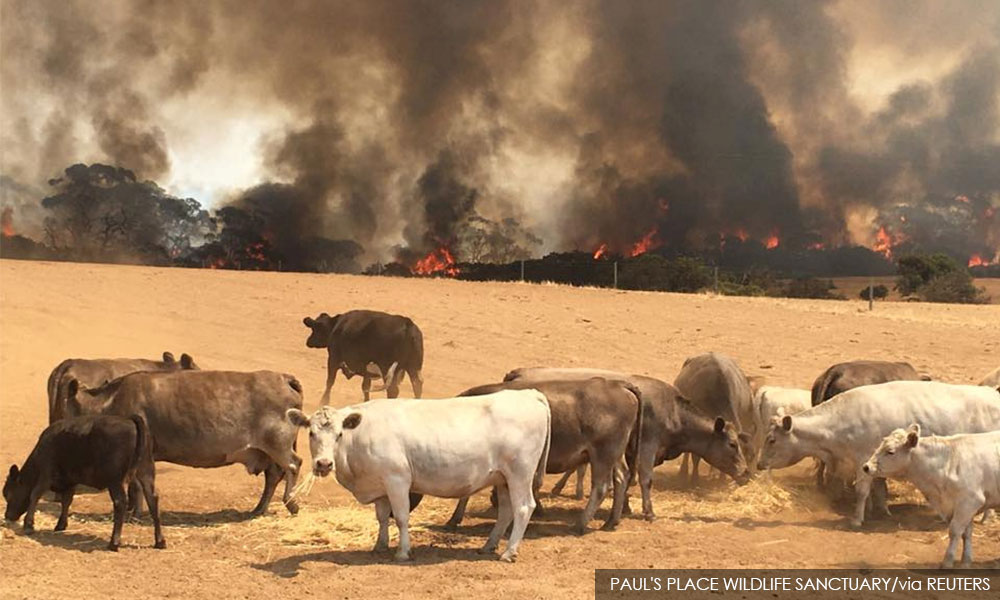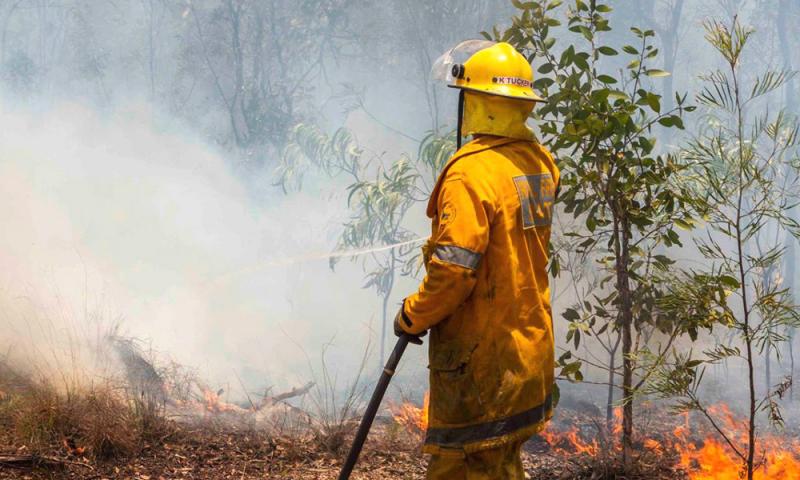Australia mourns for US firefighters as probe into plane crash begins
Firefighters in Australia held a minute's silence on Friday for three US colleagues killed in a plane crash as investigators began scouring the accident site in remote bushland.
The premier of New South Wales (NSW) state, where the C-130 Hercules crashed while on a mission to dump retardant on a huge wildfire, ordered that flags on official buildings be flown at half-mast as a mark of respect.
"We will forever be indebted to the enormous contribution and indeed the ultimate sacrifice that's been paid as a result of these extraordinary individuals doing a remarkable job," NSW rural fire service commissioner Shane Fitzsimmons said.
He said this at a farewell near Sydney airport for 32 US firefighters who were returning home after weeks on duty on Australia.
Fitzsimmons and air safety officials said it was too early to speculate on the cause of the crash.
"They have not yet released the identities of the crew, with police confirming only they were three men aged 42, 43 and 45.
"We simply don't know the circumstances pertaining to the accident at this stage. Appropriate, formal investigations and inquiries are underway," Fitzsimmons said.
Fitzsimmons earlier said field reports showed there had been a "pretty significant fireball associated with the plane crash", while a spokesman for Australia's Civil Aviation Safety Authority told Reuters the aircraft went into a valley to drop the retardant and did not emerge.
The Australian Transport Safety Bureau said it would provide a preliminary report in about 30 days, after analyzing available recorded data, reviewing weather information and interviewing any witnesses.
The owner of the aircraft, Canadian aerial firefighting company Coulson Aviation, was sending a team to help with the investigation. They are due to arrive in Sydney on Saturday morning, Fitzsimmons said.
There have been two previous crashes involving C-130 Hercules aircraft while fighting wildfires.
In a 2002 accident in California, caught on videotape, the wings of the plane folded upward, breaking off the plane before the fuselage rolled and hit the ground upside down, killing all three crew.
In 2012, another C-130 crashed in South Dakota, killing four of the six crew, in an accident that was later determined to be weather-related.
"Unfortunately, aircraft are one of the riskiest parts of wildland firefighting," said Eric Kennedy, a disaster and emergency management expert at York University in California.
Kennedy said there are many possible causes for Thursday's crash, but noted that a well-known risk in the C-130 fleet was metal fatigue-induced wing failure.
"Reduced visibility, high turbulence, and low flying can all be contributing risk factors for air tanker crashes," Kennedy said in emailed comments.
Smoke haze returns

The plane crash on Thursday took the death toll for Australia's devastating bushfire season to 32, including eight firefighters.
The wildfires have also killed millions of animals, razed thousands of homes and destroyed a land area about one-third the size of Germany since September.
Six local volunteer firefighters were injured later on Thursday when a water tanker vehicle rolled when they were battling a blaze in the south coast region of the state.
Three were released from hospital on Thursday night, while the other three would be released on Friday, officials said.
While fire conditions eased in southeastern Australia on Friday, Sydney was choking on a new smoke haze, blown in by a baking hot wind from the fires burning in the south of the state.
The harbourside city was also covered in a layer of terracotta-coloured soil brought in from the west by huge dust storms.
In New South Wales, firefighters were tackling 95 blazes, but they were all at the lowest warning levels.
In Victoria state, one out of 60 fires was rated at the warning level of "watch and act", meaning there was no immediate danger. - Reuters
RM12.50 / month
- Unlimited access to award-winning journalism
- Comment and share your opinions on all our articles
- Gift interesting stories to your friends
- Tax deductable

 Reuters
Reuters